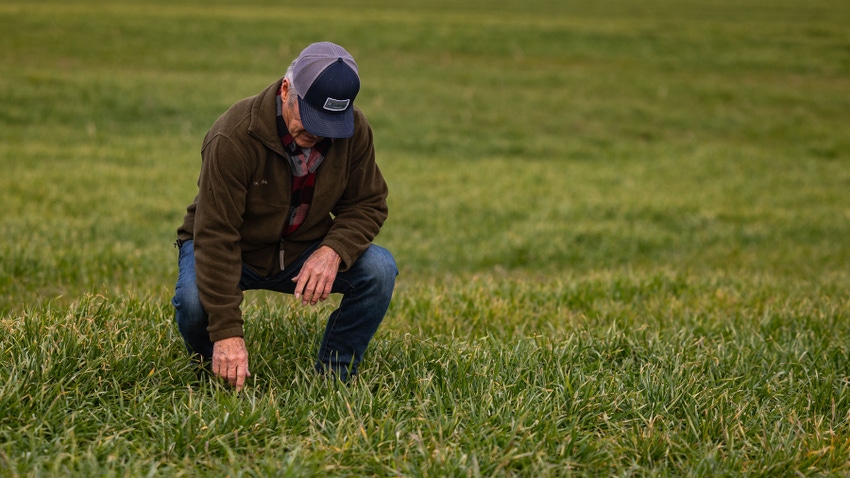April 19, 2024

Precision Conservation Management recently performed a case study identifying the most profitable cover crop fields in Illinois and how those fields were managed.
PCM was created in response to the Illinois Nutrient Loss Reduction Strategy goal to reduce nitrogen and phosphorus losses by 2035.
“Anyone who’s active in the space of water quality and environmental issues knows that the conversation is changing,” says Laura Gentry, Illinois Corn Growers Association director of water quality science. “The tides of public opinion are changing and shifting.”
After the NLRS biennial report showed progress has not been made toward nitrogen and phosphorus loss goals, Gentry says mandatory conservation practices could be on the horizon.
“We believe that the greatest gains towards the NLRS can be seen looking at nitrogen and phosphorus management utilizing tillage and cover crops,” she says.
Cover crop best practices
Gary Schnitkey, University of Illinois ag economist, studied the most profitable farms using cover crops. He found the No. 1 cover crop species used in a corn-to-soybean rotation is cereal rye. This is due to cereal rye’s low cost, ease of establishment and ability to overwinter.
Cereal rye is typically planted after corn harvest, but planting method varies. Each method has pros and cons:
Broadcast with dry fertilizer. Low cost but poorer establishment.
Broadcast followed with light tillage pass. Moderate costs but better establishment
Drilled or planted. High costs but good establishment; more labor and time intensive.
Attachments to combine. Eliminates tillage pass and has generally lower costs, but slows and complicates harvest.
The consensus in Illinois is to plant soybeans early in April for increased yield. Terminating cover crops before planting reduces the risk of competing with soybeans, but decreases the chance of eliminating herbicide passes. Terminating after planting increases the risk of competition with soybeans, but boosts the chance of eliminating herbicide passes.
Schnitkey says some of his summary findings on planting a cover crop before soybeans are:
There’s no statistical difference in yield between fields with and without cover crops.
Direct costs are lower in cover crop systems due to reduced herbicide and fertilizer costs.
Yield differences and reduced herbicide costs do not entirely offset the cost of cover crop seed and planting.
Using cover crops in a soybean-to-corn rotation is more challenging because corn is less tolerant of stress, and cover crops sequester the nitrogen needed to grow corn. The timing of planting and termination is also more difficult, and costs are more difficult to control.
Schnitkey says the three systems that show the most promise for a soybean-to-corn rotation are clover, cereal rye and terminal cover crops:
Clovers. Seed via aerial seeding before soybean harvest in late September to be effectively established.
Advantage: Clovers sequester nitrogen, which may then be available for corn.
Disadvantage: Seed and seeding methods are more costly.
Cereal rye. Plant after soybean harvest using low seeding rates, and terminate early before corn planting.
Advantage: Costs are lower.
Disadvantage: Reliance of cereal rye leads to concerns with successive planting of grasses.
Terminal cover crops, like oats or turnips. Plant in the fall after soybean harvest and terminate by frost.
Advantage: No special termination is needed in the spring.
Disadvantage: No spring growth of the cover crop means no weed control or nitrate sequestration.
Overall, Schnitkey did not find increases in yields or increased operator returns with the use of cover crops.
“If you are new to cover crops, we would suggest planting cover crops before soybeans, broadcasting cereal rye with fertilizer,” Schnitkey says. “Plant soybeans early in the spring, terminating the cover crop before planting.”
Schnitkey and Gentry recommend using financial incentive programs to cover any additional expenses from planting cover crops.
Incentive programs
The PCM program and specialists work with farmers to collect field information for a custom report outlining financial and environmental opportunities.
Gentry says several federal, private and combination programs can provide financial incentives for cover crop implementation, such as:
Through a PCM and Pepsico program, farmers enrolled are eligible to receive up to $35 per acre for planting cover crops, minimizing tillage and reducing nitrogen by at least 10%. The program is only available to farmers in PCM counties.
With Transition Incentive Payments for new cover crop acres, farmers receive $25 per acre their first year, $15 per acre their second year, and $10 per acre the third year. Farmers across the state are eligible to enroll up to 1,000 acres.
Signing Incentive Payments are available on old cover crop acres for farmers to receive a $2-per-acre payment for one year on up to 600 acres.
The PCM Regional Conservation Partnership Program is a cover crop cost-share for $40 to $60 per acre in 20 counties in Illinois and 10 counties in Kentucky. It’s handled through the local Natural Resources Conservation Service office, based on resources.
The Illinois Soybean Association and The Nature Conservancy Cover Crop Initiative is available for new cover crop acres for $10 per acre on up to 200 acres. It’s also stackable with other programs.
“Work with a PCM specialist to understand which of these programs stack and which don’t,” Gentry says. “There are incentives for growing cover crops, for no-till and strip till, and for nitrogen reduction.”
For more, visit precisionconservation.org.
Read more about:
Nutrient ManagementAbout the Author(s)
You May Also Like






